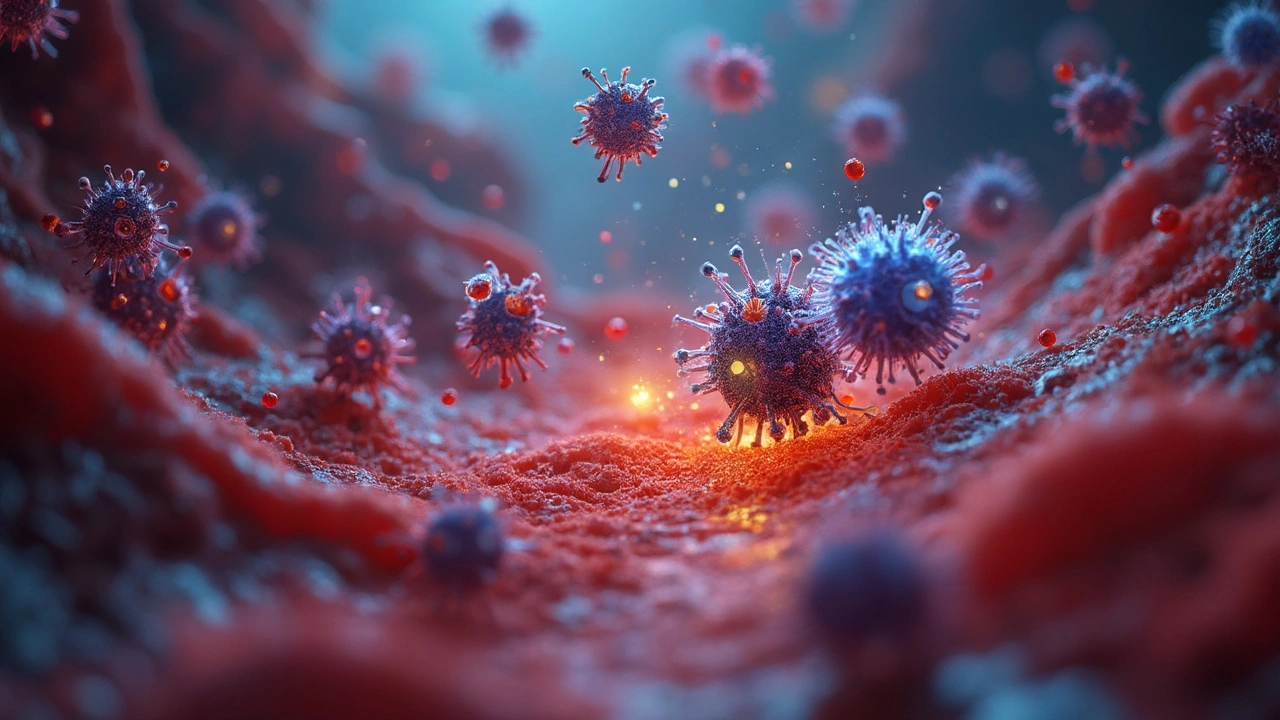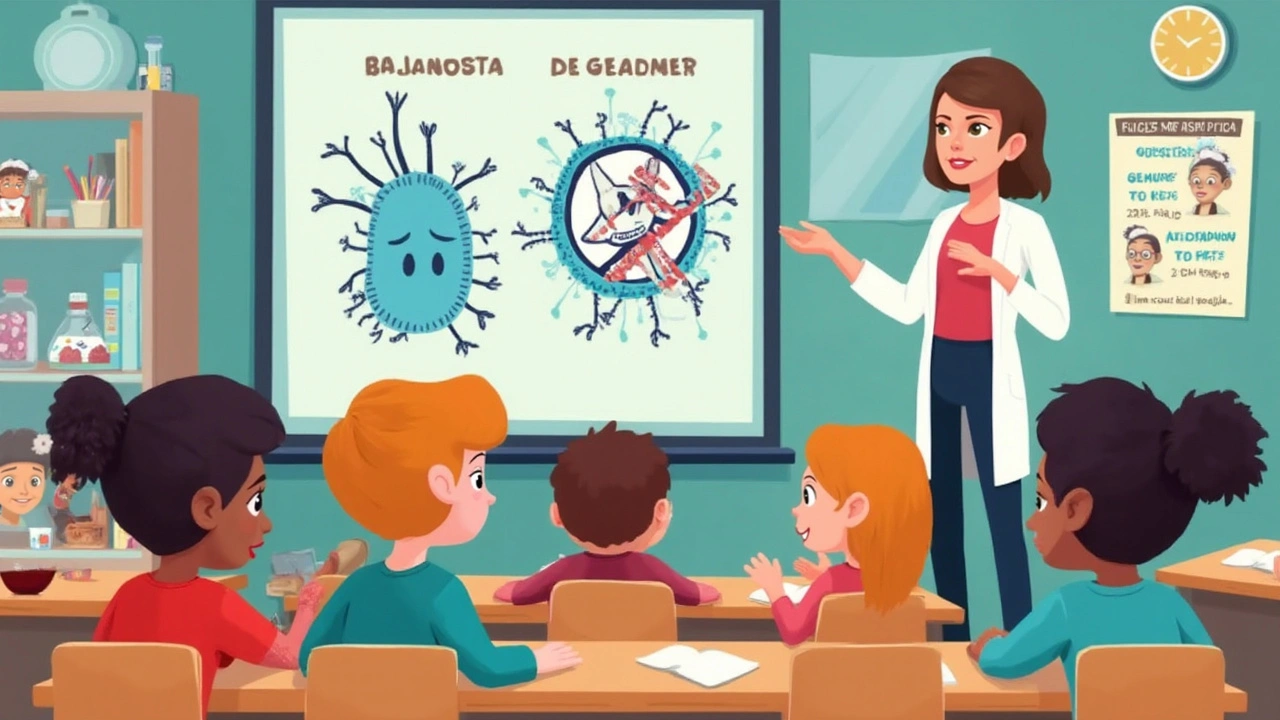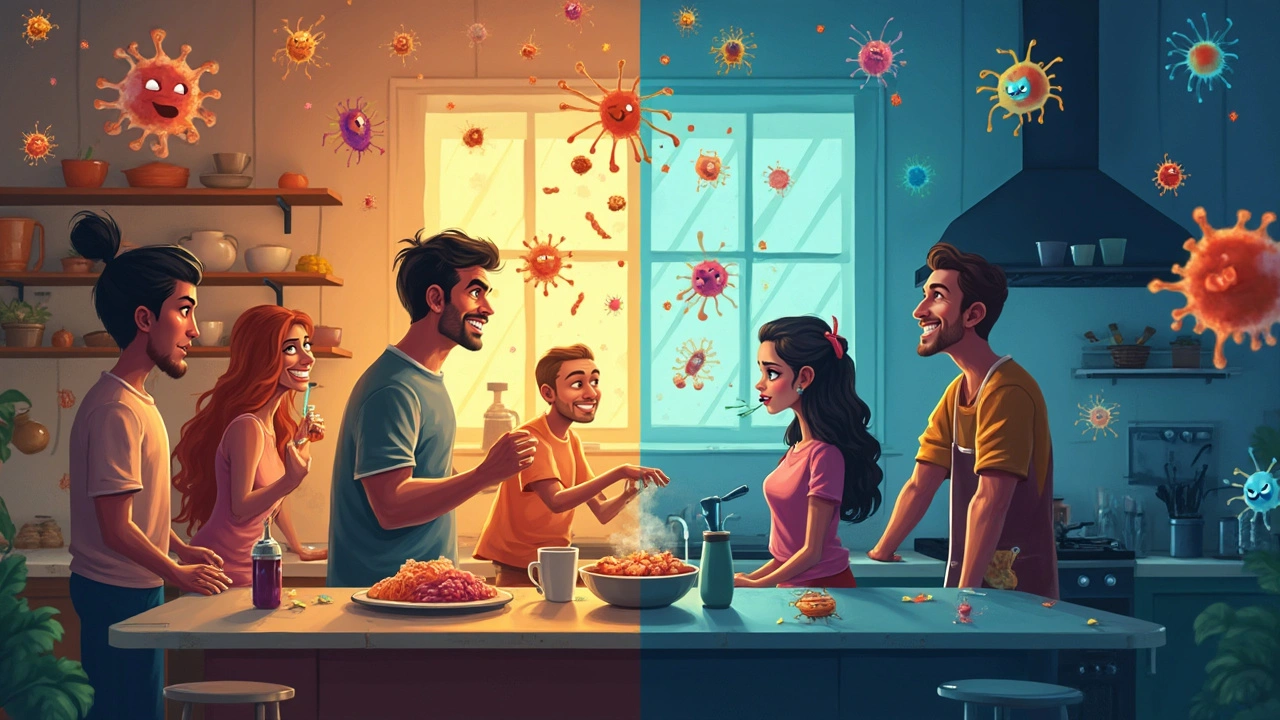Imagine a world where your own skin is both a shield and a battleground—that’s actually what happens every day as bacteria settle, multiply, and sometimes cause trouble. Some bacteria are like that one friend who overstays their welcome, turning cozy environments into chaotic messes. But most don’t get in your way at all—until something stirs the calm.
What Bacteria Are And How They Cause Infections
Bacteria are microscopic single-celled organisms found everywhere—soil, water, air, and of course, on and inside your body. Right now, you have more bacterial cells living in and on you than your own human cells! With over ten thousand different species colonizing our bodies, most are harmless or even helpful. They help digest food, protect against other germs, and keep our skin healthy. Some scientists call this collection of bacteria "the microbiome," and it acts like a personal bodyguard for your health. But not all bacteria are on your side. The trouble starts when the wrong types sneak onto the scene or the usually harmless residents get out of control. That’s what sets the stage for bacterial infections.
For an infection to happen, a few things need to go wrong. Bacteria must get in—through a cut, the air you breathe, or contaminated food. Once inside, some bacteria produce toxins or directly damage your tissues. This can happen fast; think about food poisoning kicking in just hours after you take a bite of bad chicken. The symptoms—from swelling and redness to fever and pain—are often your body’s way of fighting back. It’s like a full-on alarm system. Sometimes, the real problem isn’t just the bacteria, but how your immune system reacts. A too-strong response can cause more harm than the bacteria themselves. For example, the bacteria behind strep throat (Streptococcus pyogenes) trigger a powerful immune battle, which can lead to sore throats, rashes, and even kidney problems if untreated.
Bacterial infections pop up everywhere, from minor skin wounds turning red and oozy, to severe cases like pneumonia and meningitis. In hospitals, bacteria are sneaky—some survive on surfaces for days or weeks. Ever thought about what happens when you forget to wash your hands after touching a doorknob? Certain bacteria like Staphylococcus aureus can transfer from door handles right onto your skin, possibly leading to infection if you have a cut. And that’s just in the everyday world. In tropical climates, bacteria in water or soil can cause life-threatening diseases you might never encounter elsewhere. It’s wild how adaptable these tiny troublemakers can be.
Good Bacteria vs. Bad Bacteria: Breaking Down the Difference
Here’s a plot twist: most bacteria aren’t bad at all. In fact, your gut needs billions of them to digest food, make vitamins, and fend off harmful invaders. Yogurt and fermented foods like kimchi and sauerkraut are packed with "good" (or probiotic) bacteria that help keep your system balanced. So what sets the bad ones apart?
Harmful or “pathogenic” bacteria have unique tricks to survive and spread. They might stick to cells using tiny hair-like projections called pili, or hide inside your own cells, making it tough for your immune system to chase them down. Escherichia coli, for example, includes both friendly strains that live in your gut and dangerous strains (like E. coli O157:H7) that cause bloody diarrhea and kidney failure from just a small contaminated bite. Salmonella is another classic troublemaker—it's responsible for millions of foodborne illness cases every year.
But the line isn’t always clear. Under certain conditions, even friendly bacteria can become a problem. If your immune system is weakened—say, after a tough illness or chemotherapy—normal skin bacteria can cause infections by slipping into deeper tissues. That’s why doctors are obsessed with keeping surgical areas clean: bacteria that are harmless on your skin could wreak havoc if they get into a wound. Hospitals often battle with bacteria like MRSA (Methicillin-resistant Staphylococcus aureus), which resist common antibiotics and can be deadly in vulnerable patients. Every year, these "superbugs" kill thousands of people in the US alone, simply by being in the wrong place at the wrong time.
Even bacteria you need can get too pushy. When antibiotics wipe out good bacteria, less-friendly microbes may grow too fast—like Clostridioides difficile, which can cause severe diarrhea, especially after a hospital stay.

How Your Body Fights Off Bacterial Infections
Your immune system is a fast learner, always preparing for the next attack. The first line of defense is your skin and mucous membranes, which block many invaders. Tears and saliva contain enzymes called lysozymes that break down bacterial walls before they get a chance to multiply. If bacteria slip past these barriers, your body kicks things into high gear: white blood cells race in, engulf invaders, and trigger inflammation. That’s why cuts turn red, swollen, and warm—your body’s sending emergency supplies to the scene.
Next, your immune system fires off chemical signals to recruit more defenders. Some cells, called neutrophils, attack bacteria head-on, basically swallowing them whole. Others, like macrophages, “eat” bacteria and then alert other immune cells. This swarm of activity creates symptoms you feel: fever (your body turning up the heat to cook invading bacteria), pus, and pain. Ever wonder why you feel wiped out during a bacterial infection? Your immune system burns a ton of energy fighting the intruders. It’s your body’s version of an all-nighter, pulling out every trick to keep you alive.
Bacteria sometimes fight dirty, though. Some produce toxins that block your immune response, or even disguise themselves to look like your own cells. Streptococcus pneumoniae, the bacteria behind many ear and lung infections, have slippery “capsules” that help them dodge the immune system. But most healthy adults beat bacterial infections within days, thanks to these built-in defenses. If the infection spreads or gets out of hand, that’s when antibiotics can come into play.
Antibiotic Resistance: When Treatments Stop Working
Here’s where things get scary. Decades ago, the discovery of antibiotics changed everything. Penicillin and later drugs could kill bacteria that once meant a death sentence. But now, some bacteria have found ways to fight back, developing resistance to the very drugs meant to wipe them out. You’ve probably heard about this in the news—MRSA, “superbugs,” C. diff outbreaks. It’s not hype. The CDC reported that at least 2.8 million people a year in the US alone get infections from antibiotic-resistant bacteria, and more than 35,000 die as a direct result.
How does this happen? Every time antibiotics are used—especially for things like colds (which are actually viral), or when people don’t finish their prescribed dose—bacteria get a chance to learn how to survive. They swap genes with each other, passing on traits that make them untouchable by certain drugs. Some even produce enzymes that break down antibiotics before they can do any damage. The problem isn’t just in hospitals; resistant bacteria show up in livestock, food, and even water. It’s a huge wake-up call to use antibiotics wisely and only when needed. If not, we could end up in a world where simple cuts or routine surgeries become risky again—just like 100 years ago.
Doctors are now super careful about when to prescribe antibiotics. You can help by never pressuring your doc for antibiotics if they say you don’t need them, and always finishing your prescription even if you feel better halfway through. Also, forget the idea of saving leftover pills for "next time"—that’s one of the fastest ways to end up with a resistant infection.

Tips To Reduce Bacterial Infection Risks And When To Get Help
Studying all this might make you feel a bit overwhelmed, but the good news is you have tons of power to keep yourself healthy. Some of the best ways to cut your risk of bacterial infections are also the easiest:
- Wash your hands thoroughly, especially before eating or after touching public surfaces. Use simple soap and water for at least 20 seconds. Hand sanitizer is great in a pinch, but it’s not a magic bullet for all bacteria.
- Keep cuts and scrapes clean and covered until they heal.
- Make sure your food is cooked fully, and store leftovers properly so bacteria don’t get a chance to multiply.
- Get recommended vaccines—some, like the pneumococcal or meningococcal vaccines, protect directly against certain bacterial infections.
- If you have a chronic illness or take medicines that weaken your immune system, be extra cautious about your hygiene routines.
Often you can’t see or feel a bacterial infection coming, but certain signs should always get your attention. Redness, swelling, pain, or warmth that keeps getting worse—especially after a surgery or cut—can signal a problem. Pus, fever that won’t break, confusion, or shortness of breath are big warning signs. If you have these symptoms, don’t wait—seek help quickly. Early treatment, especially in severe cases, can be lifesaving. Don’t hesitate to speak up if you suspect something odd; doctors would always rather check you and find nothing serious than miss a bacterial infection brewing out of sight.
So next time you think about bacteria, remember: they’re both your oldest foes and everyday allies. Some are just passing through. Others are the reason you’re alive. Understanding which is which, and knowing how to protect yourself, is the secret to staying healthy in a world that’s never been truly clean.
